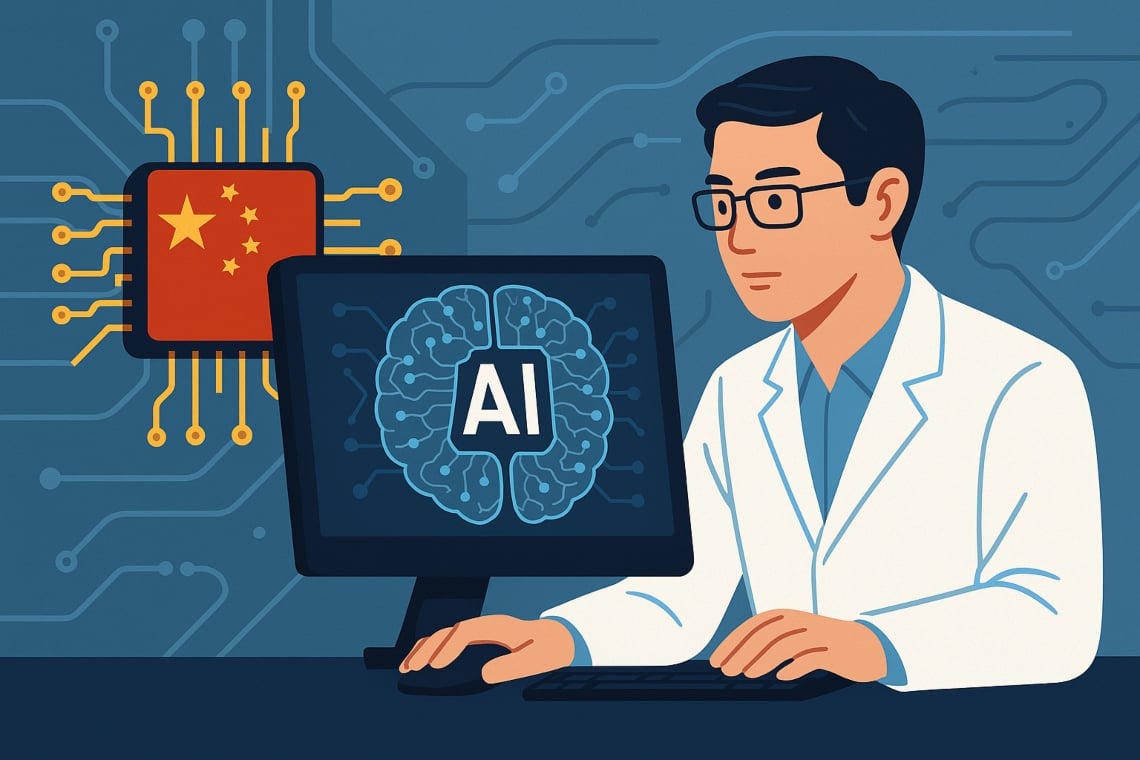In a global context increasingly marked by the technological competition between the United States and China, Ant Group, controlled by Alibaba, is taking significant steps to reduce its dependence on American chips and contain costs in the development of artificial intelligence (AI) models.
According to sources close to the company, Ant is relying on semiconduttori cinesi to train its advanced language models, using an approach that promises to revolutionize the way AI is produced in the Asian country.
Strategic Turning Point in AI Model Training for Ant Group
In recent months, Ant Group has adopted chips supplied by local companies, including entities connected to Alibaba and Huawei Technologies, to train its AI models using the Mixture of Experts (MoE) technique.
This approach, increasingly widespread among researchers, allows for effectively dividing tasks among different “experti” within the model, improving its computational efficiency.
The sources assure that the results of these models are not only comparable to those obtained with the Nvidia H800 chips. However, in some tests, they would have even surpassed the performance of the models developed by Meta.
Although Bloomberg News has not independently verified these performances, the data indicate a significant progress in China’s attempt to reduce operational costs and lower technological dependence.
The MoE technique is inspired by the principle of specialized delegation: each sub-module of the model is responsible for a specific portion of the processing, allowing for greater scalability and efficiency compared to traditional approaches.
In addition to Ant Group, Google and the Chinese startup from Hangzhou DeepSeek are also employing this methodology.
Ant has highlighted its commitment to scientific dissemination by publishing a paper that emphasizes the goal of scaling models without the use of high-end GPUs.
This approach becomes crucial for companies that, due to high costs, cannot afford to continuously use high-performance hardware.
China vs United States: local chips against American GPUs
The initiative of Ant fits into a geopolitical context in which Chinese technology companies are trying to circumvent the U.S. restrictions on the export of advanced chips, such as the Nvidia H800.
Even though it is not the most advanced chip on the market, the H800 is still one of the most powerful GPUs available in China.
Although Ant Group still maintains a part of its AI production based on Nvidia chips, the company is progressively shifting towards more economical and easily accessible alternatives. Like those offered by AMD and Chinese manufacturers.
This strategic choice marks a departure from the vision of Nvidia’s CEO, Jensen Huang, according to whom companies will continue to demand more and more computational power.
According to Huang, customer investments will not decrease, even with the emergence of more efficient models like DeepSeek R1. Thus showing a clear contrast with the philosophy adopted by Ant.
One of the highlights of Ant’s analysis concerns the significant reduction in the cost of training AI models.
According to the published document, training a model on a trillion tokens, the basic units used for learning, traditionally cost about 6.35 million yuan (about 880,000 dollars).
By employing less performant chips, optimized however for the MoE method, the cost has been reduced to 5.1 million yuan.
A non-marginal saving, which could revolutionize the accessibility to artificial intelligence especially for startups and emerging industrial sectors.
The models developed, Ling-Lite and Ling-Plus, have been designed for applications in contexts such as healthcare and finance, two areas where the power of AI can offer concrete and immediate solutions.
Precisely in the healthcare field, Ant has recently acquired Haodf.com, one of the leading online medical platforms in China. Thus confirming its interest in expanding the offering of solutions based on artificial intelligence.
Among the existing services of the company are also Zhixiaobao, a virtual assistant, and the financial advisory platform Maxiaocai.
“`html
Opening and future of Chinese artificial intelligence
“`
Another distinctive point of Ant’s strategy is the choice to make their models open source: Ling-Lite has 16.8 billion parameters, while Ling-Plus reaches 290 billion.
To make a comparison, it is estimated that GPT-4.5, the advanced model developed by OpenAI, has about 1.8 trillion parameters. Although it is closed and not accessible to the public. The research carried out by Ant is not without challenges.
The same study indicates that, during training, small variations in the structure of the models or in the type of hardware can generate instability in performance, such as spikes in error rates.
A structural difficulty that highlights how, despite the progress, even the most advanced models require constant attention.
As observed by Robin Yu, CTO of the Beijing technology company Shengshang Tech, the tangible results achieved in the real world are what truly matter:
“If you find a weak point to defeat the best kung fu master in the world, you have still won.”
An effective metaphor that emphasizes the value of practical applications compared to mere theoretical comparison.
What clearly emerges is that Ant Group is playing a key role in China’s attempt to become more technologically autonomous.
Pursuing consequently a more accessible AI, less dependent on Western hardware, and potentially more efficient for the strategic industrial sectors of the future.
The challenge to the Western AI giants is launched: not to surpass them with brute force but with intelligence, efficiency, and strategic vision.
